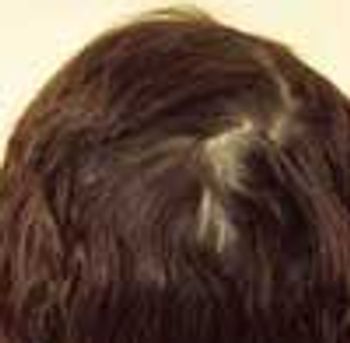
Consider this diagnosis when a patient presents with a history of rapid, diffuse hair loss. Telogen effluvium affects the entire scalp, but the crown and bitemporal areas may appear to be mainly involved if there is associated androgenetic alopecia.

Consider this diagnosis when a patient presents with a history of rapid, diffuse hair loss. Telogen effluvium affects the entire scalp, but the crown and bitemporal areas may appear to be mainly involved if there is associated androgenetic alopecia.
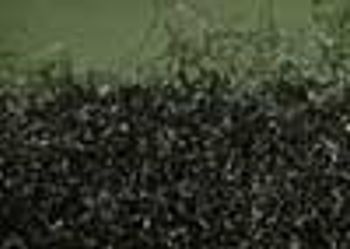
Abnormalities of the hair shaft, whether traumatic or acquired, may result in hair breakage (which gives the appearance of failure of the hair to grow) and hair loss. Trichorrhexis nodosa-traumatic fractures of hair shaft-may result from UV exposure, permanent wave procedures, coloring of the hair, or the use of hot combs. The condition may also be congenital. The hairs have a broken, “flyaway” appearance, and characteristic grayish white nodules on the hair shaft can be seen with the naked eye.
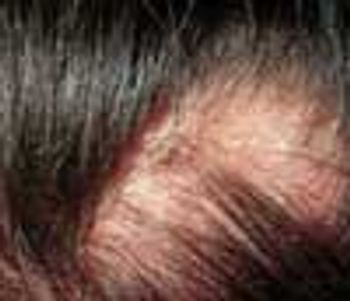
Many disorders that scar the skin also affect the scalp. Systemic lupus erythematosus, when associated with high fever and extensive systemic involvement, can cause a diffuse anagen effluvium. Hair loss caused by localized discoid lupus erythematosus (DLE) is more common. DLE may affect the scalp, where it is seen as circumscribed areas of often irreversible hair loss.
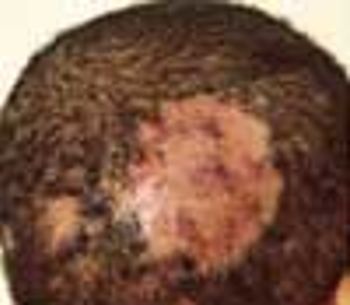
This is a common infectious problem, especially among school-age children. In many cases, there are well-defined areas of hair loss that can mimic alopecia areata.
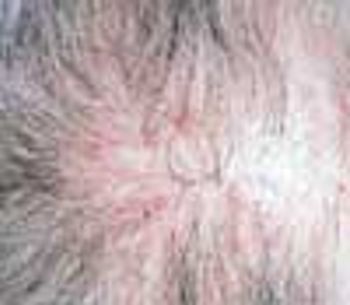
This unusual manifestation of lichen planus is marked by inflammation around the follicular epithelium; on closer examination, erythematous follicular papules may be identified.
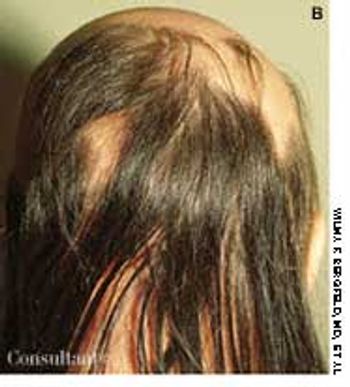
Although alopecia areata is an inflammatory, autoimmune type of hair loss, it is characterized as a nonscarring type; the hair grows back in all but extremely long-standing cases.
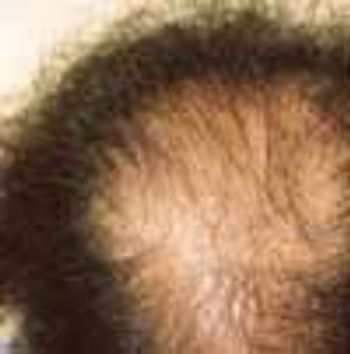
The frontal and bitemporal hair recession generally seen in men with androgenetic alopecia is not typical in women, who instead tend to undergo a diffuse thinning of hair on the crown.
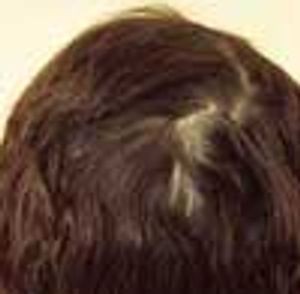
Published: September 14th 2005 | Updated:
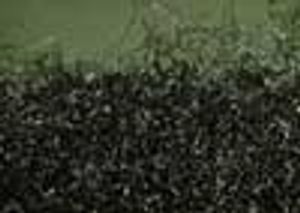
Published: September 14th 2005 | Updated:
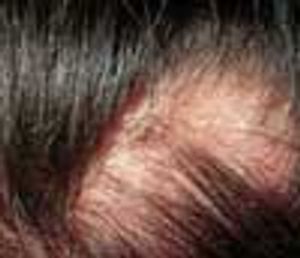
Published: September 14th 2005 | Updated:
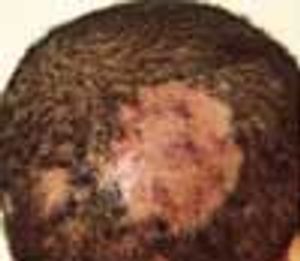
Published: September 14th 2005 | Updated:
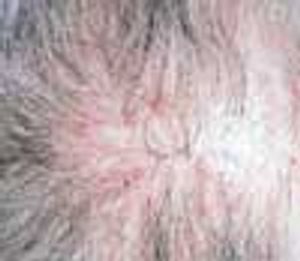
Published: September 14th 2005 | Updated:
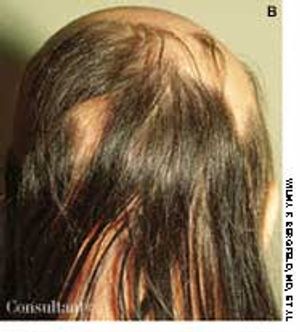
Published: September 14th 2005 | Updated: